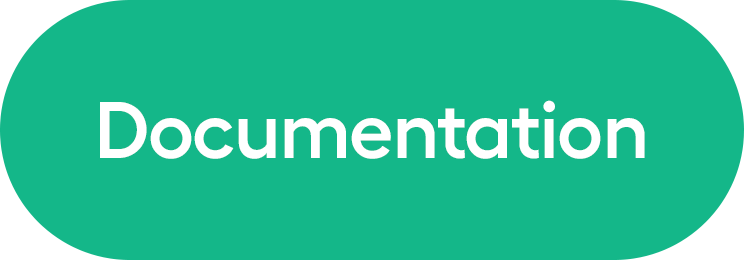Finetune Llama 3.2, Qwen 2.5, Gemma 2, Mistral 2-5x faster with 70% less memory via Unsloth!
We have a free Google Colab Tesla T4 notebook for Llava 1.6 (7B) here: https://colab.research.google.com/drive/1Ys44kVvmeZtnICzWz0xgpRnrIOjZAuxp?usp=sharing
And a free notebook for Llama 3.2 Vision (11B) here
unsloth/llava-v1.6-mistral-7b-hf-bnb-4bit
For more details on the model, please go to the original model card
✨ Finetune for Free
All notebooks are beginner friendly! Add your dataset, click "Run All", and you'll get a 2x faster finetuned model which can be exported to GGUF, vLLM or uploaded to Hugging Face.
| Unsloth supports | Free Notebooks | Performance | Memory use |
|---|---|---|---|
| Llama-3.2 (3B) | ▶️ Start on Colab | 2.4x faster | 58% less |
| Llama-3.2 (11B vision) | ▶️ Start on Colab | 2x faster | 40% less |
| Qwen2 VL (7B) | ▶️ Start on Colab | 1.8x faster | 40% less |
| Qwen2.5 (7B) | ▶️ Start on Colab | 2x faster | 60% less |
| Llama-3.1 (8B) | ▶️ Start on Colab | 2.4x faster | 58% less |
| Phi-3.5 (mini) | ▶️ Start on Colab | 2x faster | 50% less |
| Gemma 2 (9B) | ▶️ Start on Colab | 2.4x faster | 58% less |
| Mistral (7B) | ▶️ Start on Colab | 2.2x faster | 62% less |
| DPO - Zephyr | ▶️ Start on Colab | 1.9x faster | 19% less |
- This conversational notebook is useful for ShareGPT ChatML / Vicuna templates.
- This text completion notebook is for raw text. This DPO notebook replicates Zephyr.
- * Kaggle has 2x T4s, but we use 1. Due to overhead, 1x T4 is 5x faster.
LLaVa-Next, leveraging mistralai/Mistral-7B-Instruct-v0.2 as LLM
The LLaVA-NeXT model was proposed in LLaVA-NeXT: Improved reasoning, OCR, and world knowledge by Haotian Liu, Chunyuan Li, Yuheng Li, Bo Li, Yuanhan Zhang, Sheng Shen, Yong Jae Lee. LLaVa-NeXT (also called LLaVa-1.6) improves upon LLaVa-1.5 by increasing the input image resolution and training on an improved visual instruction tuning dataset to improve OCR and common sense reasoning.
Disclaimer: The team releasing LLaVa-NeXT did not write a model card for this model so this model card has been written by the Hugging Face team.
Model description
LLaVa combines a pre-trained large language model with a pre-trained vision encoder for multimodal chatbot use cases. LLaVA 1.6 improves on LLaVA 1.5 BY:
- Using Mistral-7B (for this checkpoint) and Nous-Hermes-2-Yi-34B which has better commercial licenses, and bilingual support
- More diverse and high quality data mixture
- Dynamic high resolution
Intended uses & limitations
You can use the raw model for tasks like image captioning, visual question answering, multimodal chatbot use cases. See the model hub to look for other versions on a task that interests you.
How to use
Here's the prompt template for this model:
"[INST] <image>\nWhat is shown in this image? [/INST]"
You can load and use the model like following:
from transformers import LlavaNextProcessor, LlavaNextForConditionalGeneration
import torch
from PIL import Image
import requests
processor = LlavaNextProcessor.from_pretrained("llava-hf/llava-v1.6-mistral-7b-hf")
model = LlavaNextForConditionalGeneration.from_pretrained("llava-hf/llava-v1.6-mistral-7b-hf", torch_dtype=torch.float16, low_cpu_mem_usage=True)
model.to("cuda:0")
# prepare image and text prompt, using the appropriate prompt template
url = "https://github.com/haotian-liu/LLaVA/blob/1a91fc274d7c35a9b50b3cb29c4247ae5837ce39/images/llava_v1_5_radar.jpg?raw=true"
image = Image.open(requests.get(url, stream=True).raw)
# Define a chat history and use `apply_chat_template` to get correctly formatted prompt
# Each value in "content" has to be a list of dicts with types ("text", "image")
conversation = [
{
"role": "user",
"content": [
{"type": "text", "text": "What is shown in this image?"},
{"type": "image"},
],
},
]
prompt = processor.apply_chat_template(conversation, add_generation_prompt=True)
inputs = processor(images=image, text=prompt, return_tensors="pt").to("cuda:0")
# autoregressively complete prompt
output = model.generate(**inputs, max_new_tokens=100)
print(processor.decode(output[0], skip_special_tokens=True))
Model optimization
4-bit quantization through bitsandbytes library
First make sure to install bitsandbytes, pip install bitsandbytes and make sure to have access to a CUDA compatible GPU device. Simply change the snippet above with:
model = LlavaNextForConditionalGeneration.from_pretrained(
model_id,
torch_dtype=torch.float16,
low_cpu_mem_usage=True,
+ load_in_4bit=True
)
Use Flash-Attention 2 to further speed-up generation
First make sure to install flash-attn. Refer to the original repository of Flash Attention regarding that package installation. Simply change the snippet above with:
model = LlavaNextForConditionalGeneration.from_pretrained(
model_id,
torch_dtype=torch.float16,
low_cpu_mem_usage=True,
+ use_flash_attention_2=True
).to(0)
BibTeX entry and citation info
@misc{liu2023improved,
title={Improved Baselines with Visual Instruction Tuning},
author={Haotian Liu and Chunyuan Li and Yuheng Li and Yong Jae Lee},
year={2023},
eprint={2310.03744},
archivePrefix={arXiv},
primaryClass={cs.CV}
}
- Downloads last month
- 20,425



